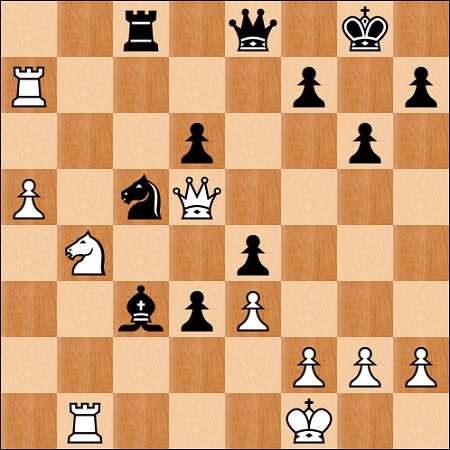The May clinic is now online here and features another collection of internet games played by Tiger Chess members. As usual there was a mixed group of submissions but one game in particular showing one of my recommendations in action.
The following position came from my Building an Opening Repertoire formula against the King's Indian in which White advances his queenside pawns in order to create a breach which his rooks can exploit. White is the exchange up but the position still looks messy. What should he do (see diagram)?

White played the powerful 33.Nc6! regaining the initiative, the point being that 33...Qxc6 allows 34.Qxf7+ followed by mate on h7 and that 33...Rxc6 loses to 34.Rb8!, once again decoying Black's queen from the defence of f7. In the game Black played 33...Bf6 when White consolidated with 34.g3 Kg7 35.Nd4 and won after 35...Be5 36.Nb5 d2 37.Qxd2 Qe6 38.Kg2 h5 39.Rc7 1-0.
Nigel Davies









